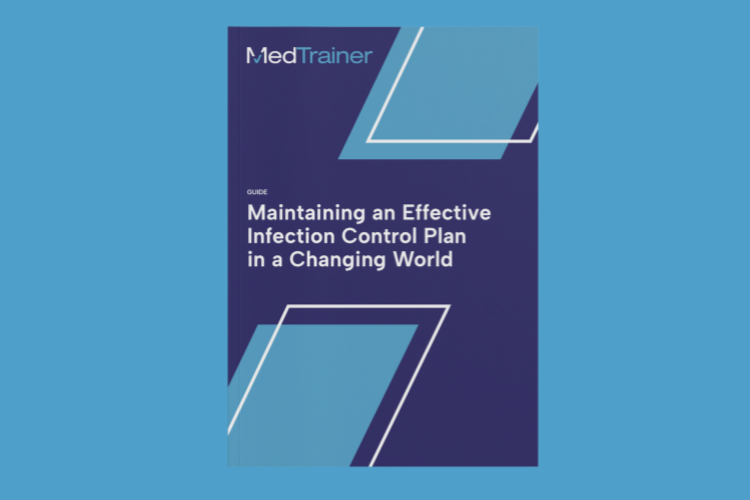Medical “never events” are serious incidents that can have life-altering consequences for a patient. There are 29 distinct types of medical never events, as outlined by the National Quality Forum (NQF). They range from surgery on the wrong patient or body part, to leaving an object behind after surgery, to patient death or disability due to medication errors.
In recent years, there’s been an increasing focus on reducing the number of never events in healthcare institutions worldwide.
A Closer Look at Never Events
Despite their name, never events happen with alarming frequency. In 2018, a Health and Human Services (HHS) study found that 25% of Medicare patients experienced a harm event while hospitalized and 12% experienced adverse effects leading to longer hospitalization, permanent harm, requiring life-saving intervention, or resulting in death. Staggeringly, 43% of these harm events were determined to be preventable.
The question isn’t how these incidents occur, but rather why they occur. The answers are virtually infinite, ranging from miscommunication between personnel to inattentiveness caused by stress or burnout. Regardless of the catalyst, the patient is ultimately left bearing the burden of the result — which is often incredibly detrimental.
It’s important to realize that these incidents are 100% preventable with proper safety protocols and procedures.
The Reality of Never Events
It’s difficult to determine which specific medical field causes the most never events, as they can occur in any healthcare setting and across various specialties. However, some studies have shown that specific procedures and surgeries have a higher incidence of never events, such as wrong-site surgery, retained foreign objects after surgery, and surgical fires.
While it’s easy to point to a high prevalence of surgical mishaps as the core contributors to never event reporting, it’s not entirely fair. Other never events, such as medication errors, can occur in any healthcare setting, including hospitals, clinics, and nursing homes. Moreover, not all never events are recognized in real-time — some have ramifications that show up much later.
The goal isn’t to point the finger at any one specific modality, but to minimize and prevent never events across all healthcare settings. To do this requires the implementation of evidence-based best practices, regular monitoring and assessment of processes, and ongoing education and training for healthcare providers. And, of course, process controls and compliance standards that ensure good governance.
Prevention Example: Infection Control Plan
Let’s take a look at one of the simplest examples of how to prevent a never event: developing and deploying an Infection Control Plan (ICP).
The NQF recognizes “any Stage 3, Stage 4, and unstageable pressure ulcers acquired after admission/presentation to a healthcare setting” as a never event. Pressure ulcers (bed sores) are subject to governance via an infection control plan to both prevent them and to treat them if and when they appear. Thus, having and abiding by an ICP creates a pretense for avoiding these types of never events.
An infection control plan is an organized, systematic plan based on infection control risk assessment. It includes policies and procedures to identify, prevent, and manage infectious diseases in a healthcare setting. The ICP should cover all areas of potential risk, including:
- Hand hygiene
- Personal protective equipment
- Environmental cleaning and disinfection
- Sterilization and high-level disinfection
- Vaccination programs
- Surveillance activities
- Outbreak management protocols
By implementing an ICP, organizations immediately put themselves in a position to safeguard against never events associated with mortal complications from severe pressure ulcers. Compliance within the ICP puts healthcare staff in a position to identify, prevent, monitor, and remedy patients against bed sores and the complications that follow infection.
Moreover, comprehensive compliance software can help organizations stay on top of their ICPs by providing real-time data on risk mitigation efforts. With this information at their fingertips, leadership can make informed decisions to keep patients safe, while improving provider readiness to prevent this particular type of never event.
Take a deeper dive into infection control plans in this free ebook.
Improving Safety With Documentation & Incident Reporting
Enabling staff and providers to utilize incident reporting in a non-confrontational manner can result in productive dialog and process improvement. This will likely increase the volume of incident reports in your facility, so streamlining and documenting the process – and resulting improvements – will be important. Including incident reporting guidance in your plans and policies is a measure of prevention.
Using an all-in-one compliance platform, you can customize incident report templates for the types of issues you want reported – from supply to behavior issues. Plus all reports are searchable so you can identify trends to prevent never events.
Ensuring safety for staff and patients is paramount in any healthcare facility. To help maintain safety protocols and awareness, facilities can adopt the following practices:
- Utilize all-in-one compliance platforms. Hospitals and surgery centers can use these platforms to create customized safety plans and manage safety data sheets. It allows staff members to access their accounts from anywhere and quickly access the proper procedures for first aid, personal protective equipment, hazardous materials storage, and other relevant safety measures.
- Emphasize the importance of safety. Regular training through a user-friendly learning management system with the ability to choose from an existing course library or upload customized specialized training for your facility can help keep the importance of safety top of mind for all staff members.
- Handle noncompliance and incidents in a non-confrontational manner. When incidents or noncompliance issues occur, it is essential to approach the situation calmly and professionally. Avoid blaming or punishing and focus on finding a solution to prevent similar incidents.
- Document incidents and noncompliance. Keeping accurate and detailed records of incidents and noncompliance can help facilities track patterns and identify areas for improvement.
- Maintain a culture of safety. Encourage open communication, foster a positive work environment, and incentivize safe practices to maintain a culture of safety within facilities.
A Comprehensive Approach to Healthcare Compliance
MedTrainer is an all-in-one compliance platform to help healthcare organizations ensure compliance with federal, state, and third-party requirements. Features include incident reporting, staff training, document and policy management, safety data sheets, and safety plan templates that users can access instantly.
Leadership can leverage modern compliance tools to report near misses to identify potential risks and take actionable steps to prevent or eliminate never events. Contact us now to learn more about our all-in-one solution for healthcare providers!

